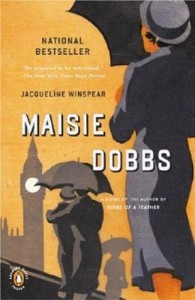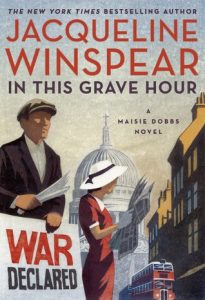 Daughters of Olympus by Hannah M. Lynn
Daughters of Olympus by Hannah M. Lynn Format: eARC
Source: supplied by publisher via Edelweiss
Formats available: paperback, ebook, audiobook
Genres: fantasy, mythology, retellings
Pages: 336
Published by Sourcebooks Landmark on July 9, 2024
Purchasing Info: Author's Website, Publisher's Website, Amazon, Barnes & Noble, Kobo, Bookshop.org, Better World Books
Goodreads
A daughter pulled between two worlds and a mother willing destroy both to protect her...
Gods and men wage their petty wars, but it is the women of spring who will have the last word...
Demeter did not always live in fear. Once, the goddess of spring loved the world and the humans who inhabited it. After a devastating assault, though, she becomes a shell of herself. Her only solace is her daughter, Persephone.
A balm to her mother's pain, Persephone grows among wildflowers, never leaving the sanctuary Demeter built for them. But she aches to explore the mortal world--to gain her own experiences. Naïve but determined, she secretly builds a life of her own under her mother's watchful gaze. But as she does so, she catches the eye of Hades, and is kidnapped...
Forced into a role she never wanted, Persephone learns that power suits her. In the land of the living, though, Demeter is willing to destroy the humans she once held dear--anything to protect her family. A mother who has lost everything and a daughter with more to gain than she ever realized, their story will irrevocably shape the world.
My Review:
Whether gods make men in their own image, or the other way around, either way it’s NOT a compliment. But it does explain a whole damn lot about the behavior of Zeus and his Olympians.
This is not a pretty story. It’s a reminder that the versions of Greek mythology we all read in school were sanitized to the max and absolutely written from a male perspective. That’s pretty much the only reason I can think of for the cavalier treatment of Zeus’ utter lack of faithfulness to his wife. Not to mention how many of the females who bore his demi-god and demi-goddess offspring said “NO” and ran as far and as fast as they could – even if that wasn’t enough.
So it’s not a stretch to believe that Zeus raped his sister Demeter to create Persephone. It’s all too typical of his behavior. Also utterly infuriating.
Which made Daughters of Olympus a fascinating rage read, because it made me look at something that was a familiar and even beloved part of my childhood reading in an entirely new and retrospectively furious way.
Escape Rating B: I ended up with mixed feelings about this book. At first, I was all in with Demeter’s point-of-view of the way things worked in her world – or rather, the way they mostly didn’t and she always ended up suffering at the hands of her brothers and fellow Olympians. Particularly Zeus. ESPECIALLY Zeus.
To the point where she spends centuries hiding away from her brother, her fellow Olympians, and the whole damn world. As much as I wanted her to stand up and take charge of at least her own fate and destiny – that’s not the way the myths go.
It’s only when the story switches to Persephone and after she is kidnapped by Hades at that, that we start seeing something different emerge – even as Persephone rails against Hades and the fate her father Zeus’ bargains have condemned her to.
What makes this retelling of Greek mythology work is that we see the old familiar stories from the perspective of characters who don’t have their own voices in the versions we originally learned. However, this is a feminine perspective and not a feminist one – regardless of which one the reader might prefer.
Meaning that Demeter and Persephone may be the predominant voices of this retelling, but their agency is still significantly limited. They can run, they can hide, but they can’t overpower – at least not until Demeter takes the reins of her own power to enact a different but still traditional feminine aspect – that of the protective, and if necessary avenging – mother.
So, if you’re looking for a retelling of familiar stories from a different perspective – but not expecting a different ending, Daughters of Olympus has an interesting tale to tell – particularly after Demeter finally breaks through her isolation to find her daughter and Persephone picks up the reins of the power that Hades is willing to give her.
Just don’t expect the story to end differently than we already know that it does. In that respect it’s similar to Kaikeyi by Vaishnavi Patel, in that a traditional story is told from the perspective of an often overshadowed female character, but the outcomes are not and cannot be changed.
Dammit.

 This Great Hemisphere by
This Great Hemisphere by  The Mummy of Mayfair (An Irregular Detective Mystery #2) by
The Mummy of Mayfair (An Irregular Detective Mystery #2) by 
 Requiem for a Mouse (Cat in the Stacks, #16) by
Requiem for a Mouse (Cat in the Stacks, #16) by  Escape Rating B: I’m here for Diesel. Not just because I’ve always wanted a Maine Coon, but because he’s just sweet and charming – and large – but also because he’s intelligent and empathetic but on a cat scale and not a human one. There are quite a few cozy mystery series that feature cats – and why not? – but it’s refreshing that the cat in this series doesn’t solve the mysteries on his own and doesn’t mysteriously help his person solve them.
Escape Rating B: I’m here for Diesel. Not just because I’ve always wanted a Maine Coon, but because he’s just sweet and charming – and large – but also because he’s intelligent and empathetic but on a cat scale and not a human one. There are quite a few cozy mystery series that feature cats – and why not? – but it’s refreshing that the cat in this series doesn’t solve the mysteries on his own and doesn’t mysteriously help his person solve them. Pets and the City: True Tales of a Manhattan House Call Veterinarian by
Pets and the City: True Tales of a Manhattan House Call Veterinarian by  Reality Rating B: The author does several things in this collection of cat tales and not-necessarily-shaggy dog stories. First she tells her own tale, her origin story, not just how and why she became a vet, but how she fell – or was pushed, she was definitely pushed – into opening her peripatetic Manhattan practice.
Reality Rating B: The author does several things in this collection of cat tales and not-necessarily-shaggy dog stories. First she tells her own tale, her origin story, not just how and why she became a vet, but how she fell – or was pushed, she was definitely pushed – into opening her peripatetic Manhattan practice. Unexploded Remnants by
Unexploded Remnants by  A Ruse of Shadows (Lady Sherlock, #8) by
A Ruse of Shadows (Lady Sherlock, #8) by  (This is a hint, by the way. Theoretically the books in this series could be read as standalone, but I wouldn’t recommend it. It’s not just that the endings of each book flow into the next, but that there’s a vast, interconnected and rather sticky web between all of the cases – at least so far. I’m glad I began at the beginning with A
(This is a hint, by the way. Theoretically the books in this series could be read as standalone, but I wouldn’t recommend it. It’s not just that the endings of each book flow into the next, but that there’s a vast, interconnected and rather sticky web between all of the cases – at least so far. I’m glad I began at the beginning with A Escape Rating B+: I have consistently found this series to be fascinating and frustrating in equal measure – and this entry in the series is no exception.
Escape Rating B+: I have consistently found this series to be fascinating and frustrating in equal measure – and this entry in the series is no exception. This story is also a bit of a mirror image to
This story is also a bit of a mirror image to  The Comfort of Ghosts (Maisie Dobbs, #18) by
The Comfort of Ghosts (Maisie Dobbs, #18) by  As seems fitting for this final book in the Maisie Dobbs series, A Comfort of Ghosts begins with an ending. One of the towering – literally as he was quite tall – secondary figures in this long-running series, Lord Julian Compton, originally Maisie’s employer, once-upon-a-time her father-in-law, later and last her friend, has died, Leaving Maisie to mourn, to comfort his widow, to be the executor of his estate and to clean up his last act in the late war.
As seems fitting for this final book in the Maisie Dobbs series, A Comfort of Ghosts begins with an ending. One of the towering – literally as he was quite tall – secondary figures in this long-running series, Lord Julian Compton, originally Maisie’s employer, once-upon-a-time her father-in-law, later and last her friend, has died, Leaving Maisie to mourn, to comfort his widow, to be the executor of his estate and to clean up his last act in the late war. Escape Rating A-: This story closes all the circles that were opened back in the very first book in this series, the titular
Escape Rating A-: This story closes all the circles that were opened back in the very first book in this series, the titular  For those, like this reader, who have gotten to know Maisie over the years and books, this story is a bittersweet delight. It also feels right that Maisie leave the stage at this historical juncture, as the world she knew is not the world that is to come – as we know and as hints are shown in the story.
For those, like this reader, who have gotten to know Maisie over the years and books, this story is a bittersweet delight. It also feels right that Maisie leave the stage at this historical juncture, as the world she knew is not the world that is to come – as we know and as hints are shown in the story. Ghostdrift (Finder Chronicles #4) by
Ghostdrift (Finder Chronicles #4) by  Over the course of the series (
Over the course of the series ( Escape Rating A+: June is Audiobook Month, and this final book in the
Escape Rating A+: June is Audiobook Month, and this final book in the  Together, those three plots, Belos’ need for closure, Captain Ahab – actually Captain Todd – following Belos where no one REALLY should have gone before, or again, and all the crews stuck on their very own tiny Gilligan’s Island planetoid, doing their best – or worst – to get along well enough to get back home.
Together, those three plots, Belos’ need for closure, Captain Ahab – actually Captain Todd – following Belos where no one REALLY should have gone before, or again, and all the crews stuck on their very own tiny Gilligan’s Island planetoid, doing their best – or worst – to get along well enough to get back home.
 The Hero She Craves by
The Hero She Craves by  Some tropes are classics for a reason, and The Hero She Craves wonderfully illustrates every single one of those reasons for one of my absolute faves.
Some tropes are classics for a reason, and The Hero She Craves wonderfully illustrates every single one of those reasons for one of my absolute faves. Escape Rating A-: Three books in, I have to say that I’ve enjoyed the first two books in the
Escape Rating A-: Three books in, I have to say that I’ve enjoyed the first two books in the  It’s not that Halle isn’t an adult and doesn’t know her own mind or heart, it’s that they are at different points in their lives, have different-sized trains of emotional baggage behind them, and will need to reconcile those differences to have a decent chance at a future.
It’s not that Halle isn’t an adult and doesn’t know her own mind or heart, it’s that they are at different points in their lives, have different-sized trains of emotional baggage behind them, and will need to reconcile those differences to have a decent chance at a future.